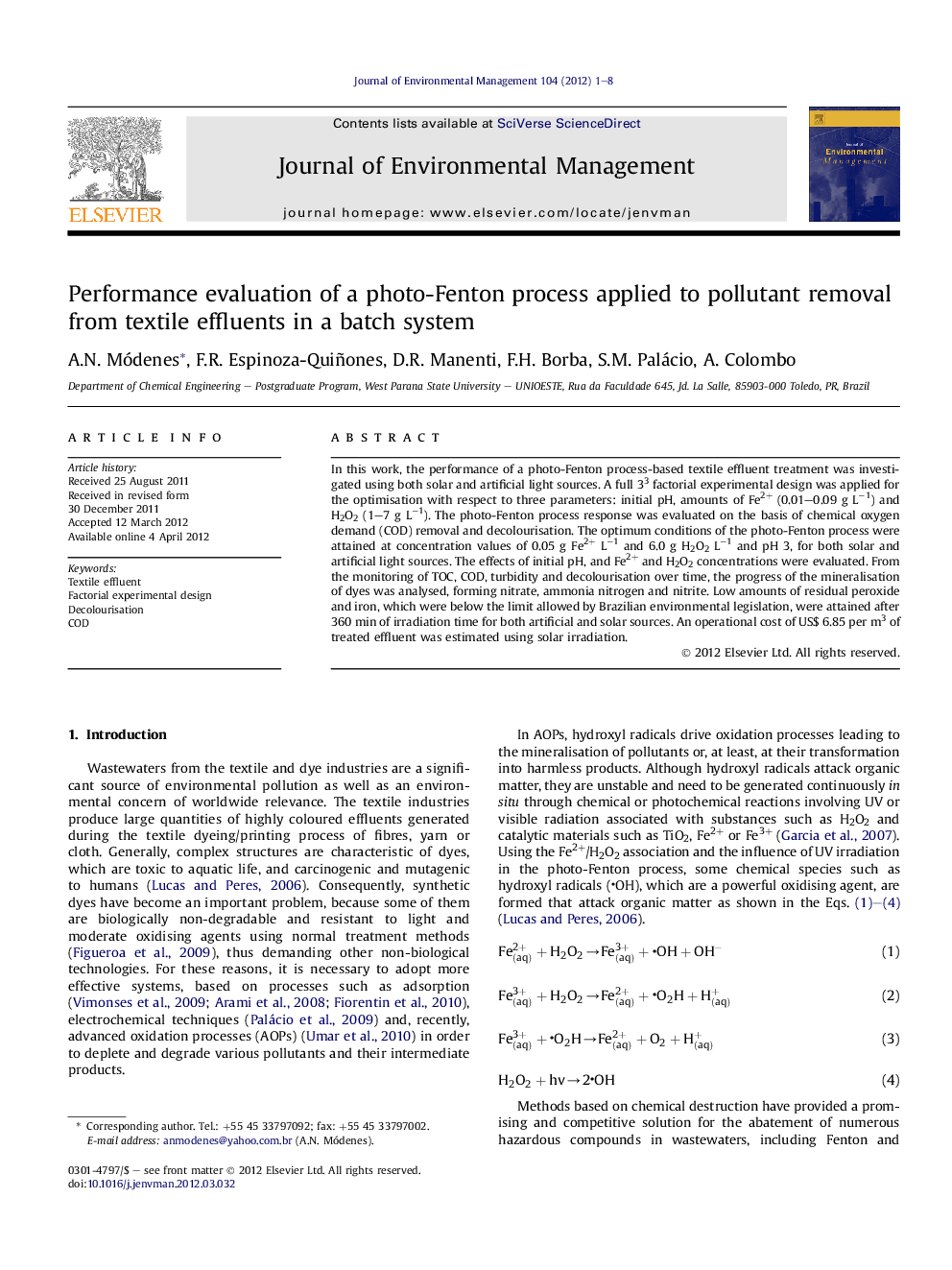| Article ID | Journal | Published Year | Pages | File Type |
|---|---|---|---|---|
| 1056782 | Journal of Environmental Management | 2012 | 8 Pages |
In this work, the performance of a photo-Fenton process-based textile effluent treatment was investigated using both solar and artificial light sources. A full 33 factorial experimental design was applied for the optimisation with respect to three parameters: initial pH, amounts of Fe2+ (0.01–0.09 g L−1) and H2O2 (1–7 g L−1). The photo-Fenton process response was evaluated on the basis of chemical oxygen demand (COD) removal and decolourisation. The optimum conditions of the photo-Fenton process were attained at concentration values of 0.05 g Fe2+ L−1 and 6.0 g H2O2 L−1 and pH 3, for both solar and artificial light sources. The effects of initial pH, and Fe2+ and H2O2 concentrations were evaluated. From the monitoring of TOC, COD, turbidity and decolourisation over time, the progress of the mineralisation of dyes was analysed, forming nitrate, ammonia nitrogen and nitrite. Low amounts of residual peroxide and iron, which were below the limit allowed by Brazilian environmental legislation, were attained after 360 min of irradiation time for both artificial and solar sources. An operational cost of US$ 6.85 per m3 of treated effluent was estimated using solar irradiation.
► Real-life textile effluent was treated by applying a photo-Fenton process. ► RSM was used to determine the optimal photo-Fenton reactor conditions. ► The process variables of the mineralization of dyes were monitored. ► A considerable reduction on the pollutants was attained with values below the allowed limits. ► The total cost of the textile effluent treatment was estimated.
